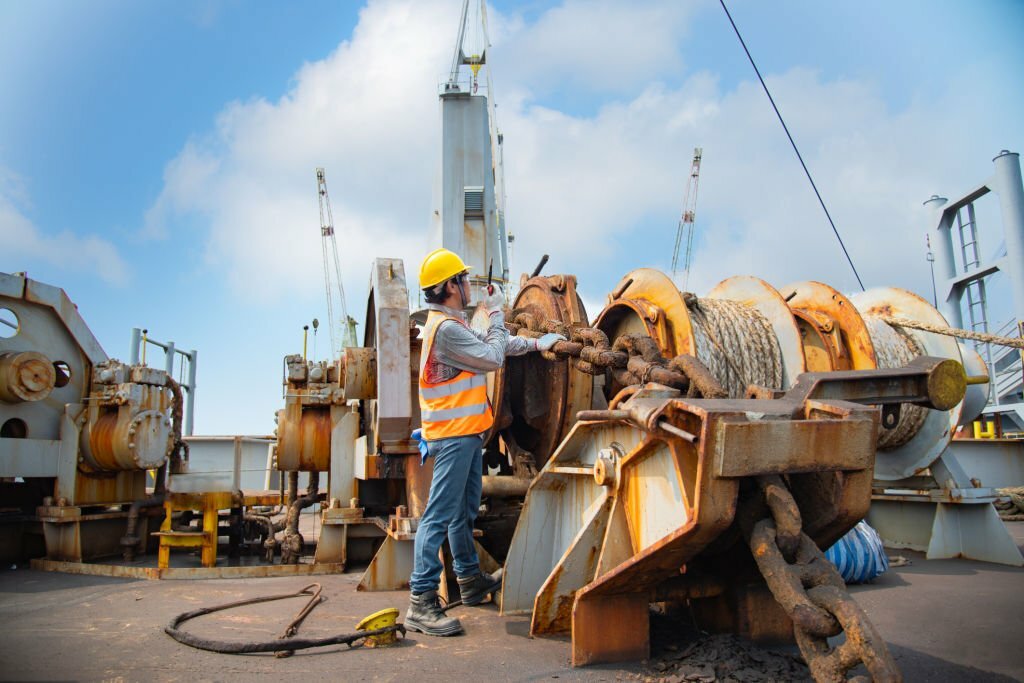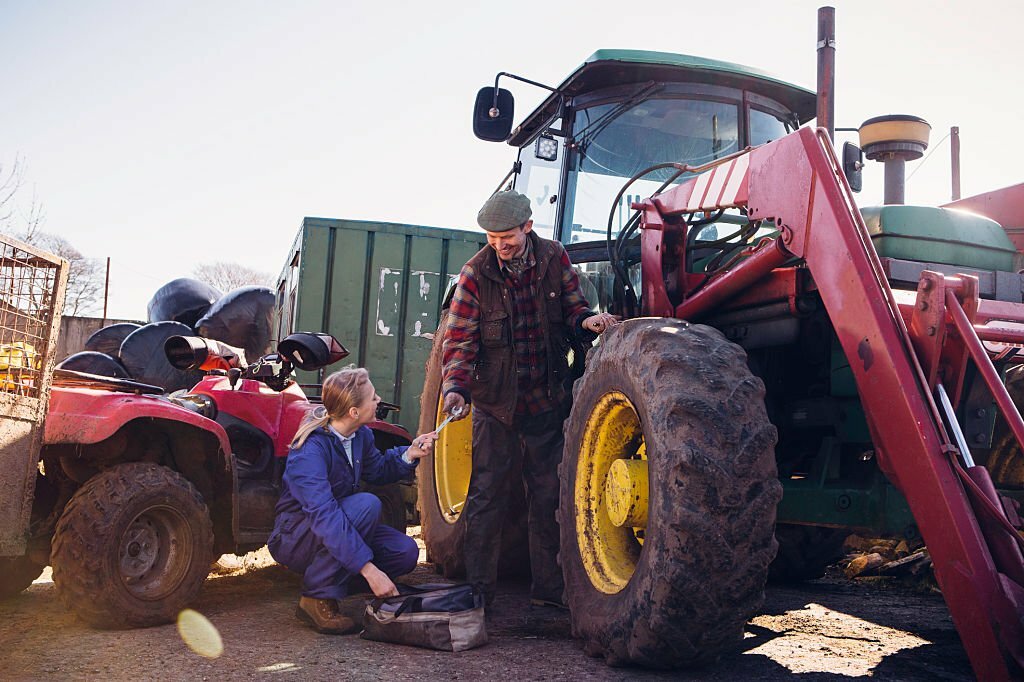Introduction:

Operating heavy construction equipment presents a myriad of challenges and inherent risks that demand meticulous attention to safety. Prioritizing the well-being of both operators and those within the vicinity is of utmost importance in creating a secure working environment. This guide aims to delve into indispensable safety measures essential for anyone engaged in the operation of heavy construction machinery.
The complexity and power of heavy equipment necessitate a thorough understanding of their functions and controls. Proper training becomes the cornerstone for safe operation, ensuring that operators are not only acquainted with the machinery but also updated on the latest safety protocols. Beyond training, a comprehensive pre-operation inspection is imperative. This includes scrutinizing the equipment for visible damages, leaks, and loose components, with any identified issues promptly addressed before the commencement of work.
Moreover, the utilization of personal protective equipment (PPE) cannot be overstated. Helmets, high-visibility vests, steel-toed boots, and gloves constitute a vital layer of defense against potential accidents. Throughout this guide, we will unravel the intricacies of these safety measures and explore additional precautions to foster a culture of responsibility and security in the realm of heavy construction equipment operation.
Proper Training:

Embarking on the operation of heavy machinery necessitates a foundational commitment to comprehensive training. The imperative nature of this preparatory step cannot be overstated. Operators must delve deep into the intricacies of the specific equipment they are set to handle, acquainting themselves not only with the controls and functions but also with the intricate safety features that form a critical aspect of accident prevention.
A well-trained operator is equipped not only with the technical know-how but also with an acute awareness of potential hazards and the means to mitigate them. This training extends beyond initial familiarization; it is an ongoing process. Regular updates are essential to keep operators abreast of the latest safety protocols and industry best practices. The dynamic nature of construction environments demands a constant evolution of knowledge, ensuring that operators are well-prepared to navigate any challenges that may arise during their machinery operations.
In essence, investing time and resources in thorough and continuous training establishes a robust foundation for safe heavy machinery operation. It not only safeguards the operators themselves but also contributes to an overall culture of safety and proficiency on construction sites, minimizing risks and enhancing the efficiency of heavy equipment operations.
Pre-Operation Inspection:

Executing a comprehensive pre-operation inspection stands as a pivotal measure in fortifying equipment safety within the realm of heavy machinery operation. This meticulous process entails a systematic scrutiny of the machinery, encompassing a vigilant check for visible damages, loose bolts, hydraulic leaks, and a meticulous assessment of fluid levels. Each component scrutinized during this process plays a crucial role in the seamless functionality of the equipment.
By identifying and addressing potential issues before the commencement of operations, this preemptive inspection serves as a proactive shield against unforeseen complications. Visible damages, if left unattended, can escalate into serious malfunctions, posing risks to both the equipment and the operators. Loose bolts, a common occurrence in the rugged environment of construction sites, can compromise the structural integrity of the machinery, potentially leading to accidents.
Hydraulic leaks, though seemingly minor, can result in a loss of efficiency and, in extreme cases, catastrophic failures. Maintaining proper fluid levels is equally critical, ensuring that the machinery operates at its optimum capacity. The significance of these meticulous checks lies not only in averting immediate dangers but also in fostering a culture of preventive maintenance, enhancing the overall longevity and reliability of heavy construction equipment. This proactive approach exemplifies a commitment to safety and underscores the responsibility of operators to maintain a secure working environment.
Protective Gear:

Ensuring the safety of operators within the realm of heavy construction equipment goes beyond technical proficiency—it extends to the very attire they wear. Operators are mandated to don appropriate personal protective equipment (PPE) consistently, forming an essential shield against potential hazards that may arise during their work. This indispensable gear encompasses a suite of items designed to mitigate risks and safeguard the well-being of the operator.
Helmets serve as a first line of defense, offering protection against falling debris and potential head injuries. High-visibility vests, a vibrant beacon amidst the bustling construction site, enhance visibility and reduce the risk of collisions, a critical feature in environments characterized by the movement of large machinery. Steel-toed boots provide crucial foot protection, shielding against heavy objects and potential crushing incidents. Additionally, gloves offer a tactile barrier, safeguarding hands from cuts, abrasions, and the impact of vibrations generated by the machinery.
This ensemble of PPE forms a crucial layer of defense in the unpredictable landscape of construction sites, serving as a safeguard in the event of accidents or unforeseen events. Beyond mere compliance, the consistent use of PPE embodies a commitment to personal safety and underscores the responsibility of operators in fostering a secure working environment. It is a tangible expression of a proactive approach to risk mitigation, ensuring that operators are well-prepared for the challenges inherent in heavy construction equipment operations.
Clear Communication:

In the dynamic and bustling environment of construction sites, the significance of effective communication cannot be overstated. It serves as the linchpin for seamless operations and, more importantly, as a critical factor in ensuring the safety of all personnel involved. Establishing clear communication protocols emerges as a paramount necessity, particularly in bridging the gap between equipment operators and ground personnel.
Operators, perched atop heavy machinery, rely on accurate and timely information from those on the ground to navigate the construction site effectively. Clear communication protocols lay the foundation for a synchronized workflow, reducing the likelihood of misunderstandings that could lead to accidents or disruptions. The implementation of radios or hand signals emerges as a practical and immediate solution to facilitate this exchange of information.
Radios enable real-time communication, allowing operators and ground personnel to relay instructions, warnings, or updates swiftly and without ambiguity. Meanwhile, hand signals provide a visual language that transcends the noise of the construction site, offering a reliable means of communication, especially in scenarios where verbal communication might be challenging.
By prioritizing and enforcing these communication protocols, construction sites not only enhance operational efficiency but also elevate overall safety standards. The clarity in communication fosters a collaborative environment where each member of the team is aware of their roles and responsibilities, creating a cohesive and secure working atmosphere.
Adherence to Load Limits:

The importance of adhering to specified load limits in the operation of heavy equipment cannot be overstated. Each piece of machinery is meticulously engineered with predetermined load capacities, and surpassing these limits poses imminent risks to both the equipment and the personnel involved. Exceeding load limits can precipitate instability, compromising the structural integrity of the machinery and paving the way for potential accidents that could have severe consequences.
Operators shoulder a profound responsibility in maintaining a safe working environment by being acutely aware of and strictly adhering to these load limits. This awareness extends beyond a mere acknowledgment of the limits; it requires a comprehensive understanding of the equipment’s load-bearing capabilities and the potential repercussions of pushing those boundaries.
The consequences of surpassing load limits reverberate through the entire construction site, impacting not only the immediate vicinity but potentially causing cascading effects on adjacent structures or equipment. Therefore, operators are not just stewards of heavy machinery; they are custodians of safety. By respecting and abiding by load limits, operators contribute significantly to risk mitigation, ensuring that the working environment remains secure, operations remain efficient, and potential accidents are averted. This commitment to load limit adherence encapsulates a dedication to both the integrity of the machinery and the overall safety of the construction site.
Avoiding Blind Spots:
Navigating heavy construction equipment amidst expansive worksites is not without its challenges, with large blind spots emerging as a potent risk factor. These blind spots, areas not visible to operators, can pose significant threats to both the equipment and personnel in the vicinity. Recognizing the gravity of this issue, operators undergo specialized training that emphasizes the importance of a meticulous pre-movement assessment.
Operators are trained to conduct comprehensive checks of their surroundings before initiating any equipment movement. This includes utilizing mirrors, cameras, and other advanced technologies to mitigate blind spots effectively. The training not only imparts technical skills but instills a heightened sense of awareness regarding the potential dangers lurking in these obscured areas.
On the flip side, ground personnel also play a pivotal role in minimizing the risks associated with blind spots. A collaborative approach is fostered, encouraging communication between operators and ground personnel to establish designated safe zones. Ground personnel are educated on the significance of avoiding blind spots whenever possible, creating a synchronized environment where everyone is cognizant of potential hazards.
By integrating these preventive measures into daily operations, construction sites cultivate a culture of safety where the awareness of blind spots becomes second nature. This proactive approach ensures that potential risks are mitigated, promoting a secure working environment where both operators and ground personnel can coexist without compromising safety.
Regular Maintenance:

Scheduled maintenance stands as the bedrock of ensuring the longevity and optimal functionality of heavy construction equipment. Recognizing the demanding nature of construction environments, where machinery operates under rigorous conditions, regular inspections and servicing become indispensable. This proactive approach serves as a preventative measure, allowing operators and maintenance crews to identify and address potential issues before they escalate into more significant problems.
Regular inspections involve meticulous scrutiny of the equipment’s various components, ranging from engine systems to hydraulic mechanisms. By conducting these assessments at predetermined intervals, maintenance teams can detect wear and tear, leaks, or any anomalies that might compromise the equipment’s efficiency or safety. Addressing these issues promptly not only prevents equipment failure but also contributes to overall cost savings by averting the need for extensive repairs or replacements.
Scheduled maintenance is not merely a reactive response to visible problems; it is a strategic investment in the well-being of heavy machinery. It fosters a culture of responsibility and attentiveness among operators and maintenance personnel, emphasizing the importance of proactive care. Ultimately, this approach minimizes downtime, enhances the reliability of equipment, and ensures a seamless workflow on construction sites, where every component operates at its peak performance, contributing to the overall success of construction projects.
Emergency Response Plans:

The proactive establishment of well-defined emergency response plans is a cornerstone of safety management on construction sites. These plans are meticulously crafted to address a spectrum of potential scenarios, from minor incidents to critical accidents. Protocols for handling accidents are a central component, outlining the step-by-step procedures to be followed in the event of an unforeseen occurrence. This includes clear communication channels, immediate response actions, and the assignment of responsibilities to ensure a swift and organized reaction.
First aid procedures form a critical dimension of these plans, providing guidelines for immediate medical assistance until professional help arrives. Operators and site personnel are trained in basic first aid skills, and the location of first aid kits is strategically identified for accessibility. Moreover, the positioning of emergency equipment such as fire extinguishers is carefully planned to mitigate the impact of fire-related emergencies, a common risk in construction environments.
Regular drills and training sessions are conducted to familiarize all personnel with the emergency response plans, ensuring a rapid and coordinated response during high-stress situations. By embedding these comprehensive measures into the construction site’s operational framework, the potential risks are not only anticipated but actively addressed, fostering a culture of preparedness, and ultimately, safeguarding the well-being of all individuals on site.
Conclusion:
Safety must be paramount in heavy construction equipment operations to prevent accidents and establish a secure working environment. Adhering to comprehensive safety measures is pivotal for minimizing risks and protecting the well-being of personnel on construction sites. This commitment to safety extends beyond protocols; it fosters a culture of responsibility where every individual actively contributes to maintaining a safe workplace. Prioritizing safety involves continuous training, proactive maintenance, and effective communication, creating a synergy that mitigates potential hazards. Ultimately, the well-being of everyone on the construction site should always take precedence, reinforcing the importance of a collective dedication to safety practices. This ensures that each day on the construction site is not just productive but, more importantly, concludes with everyone returning home safely.

